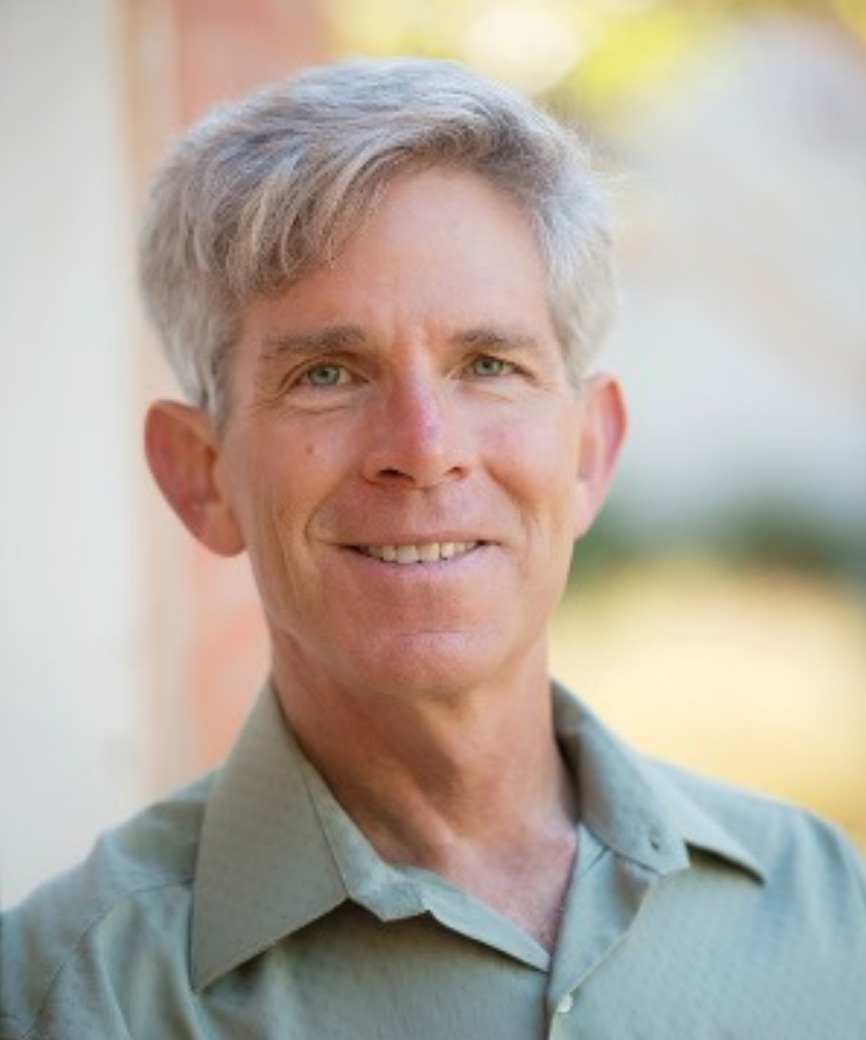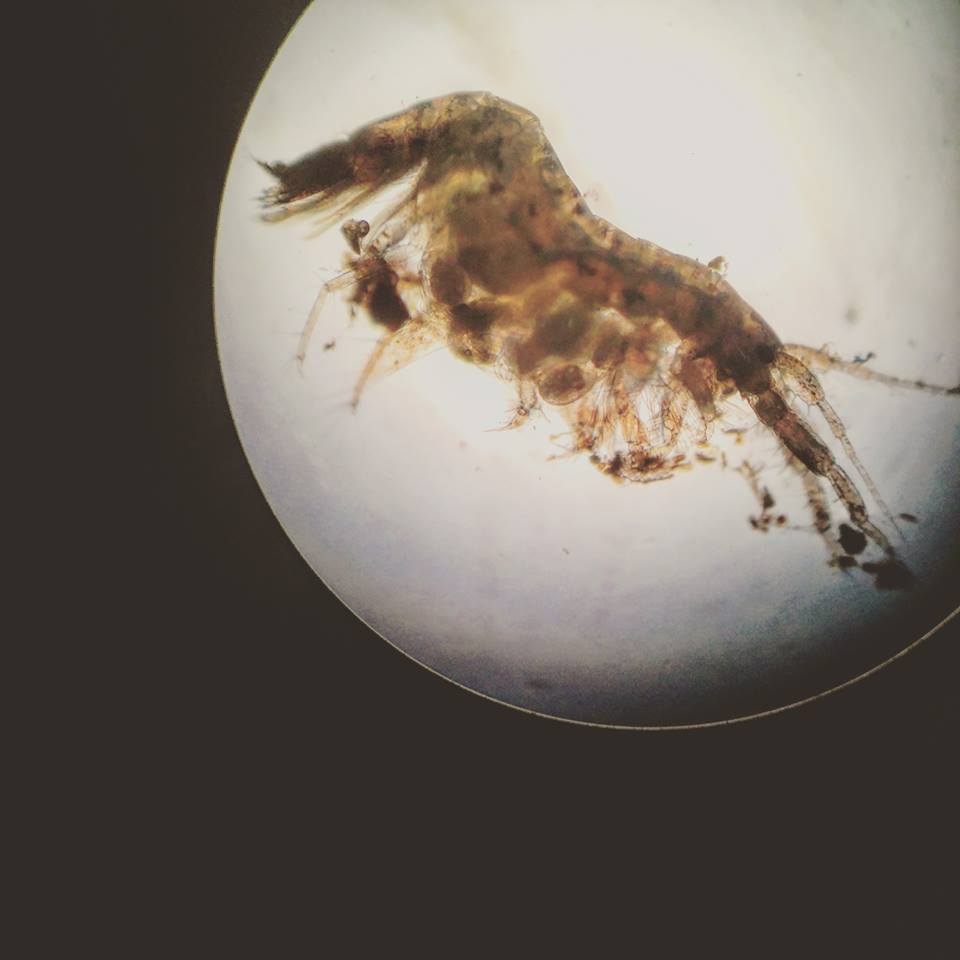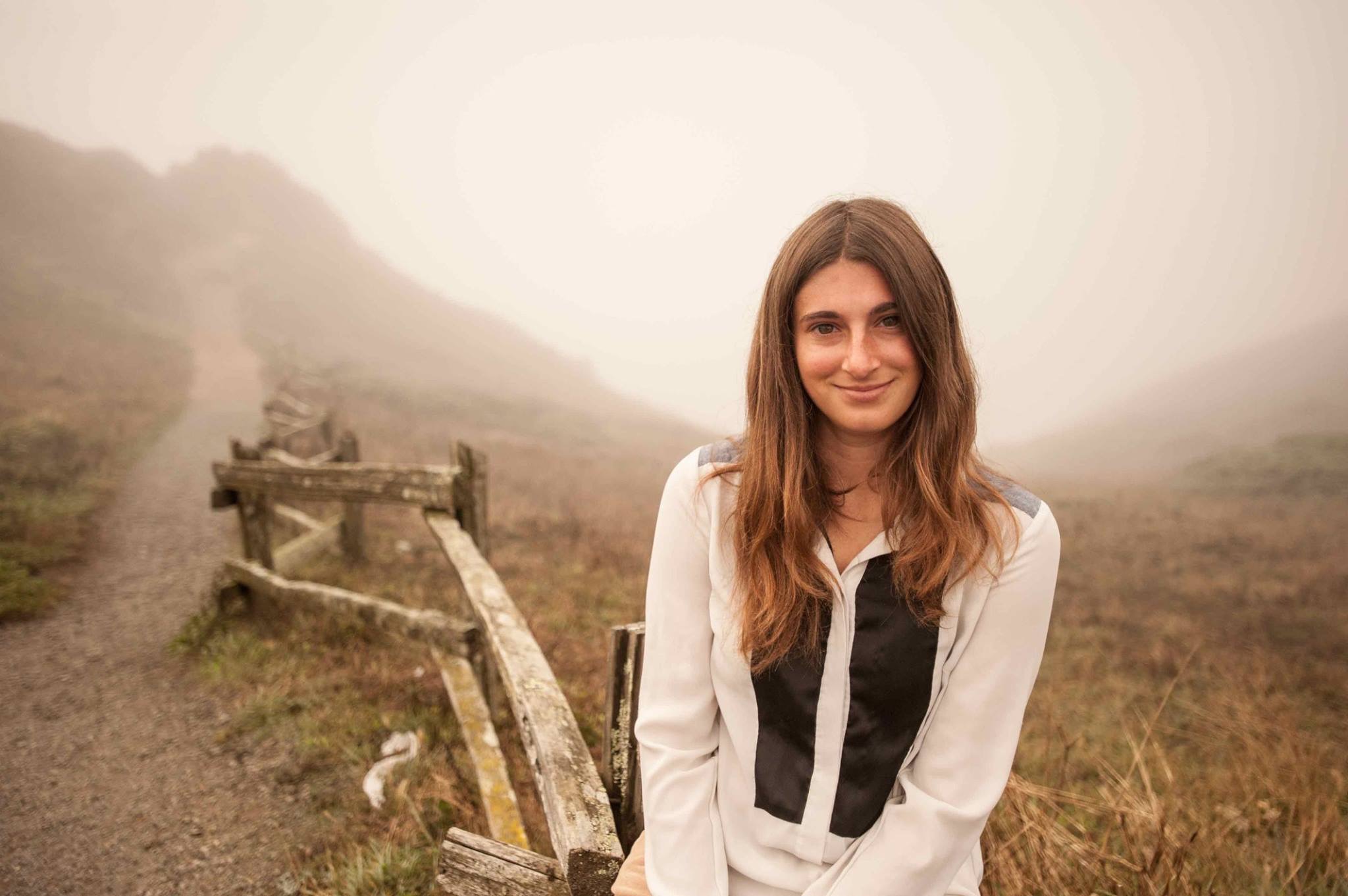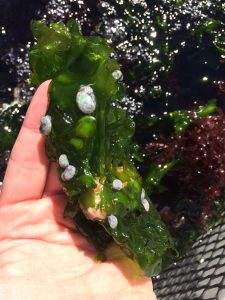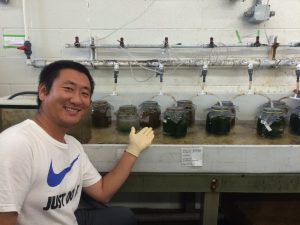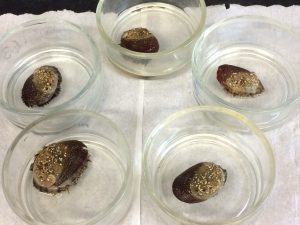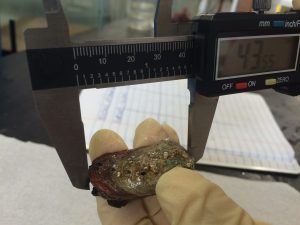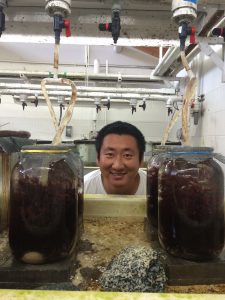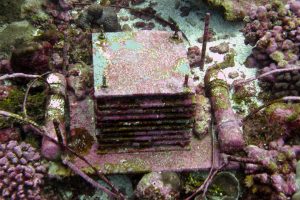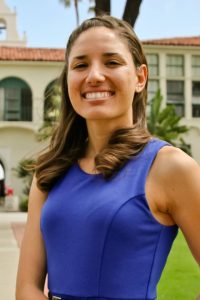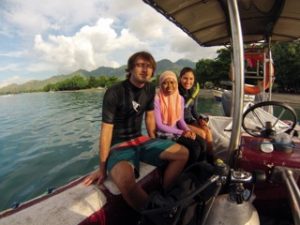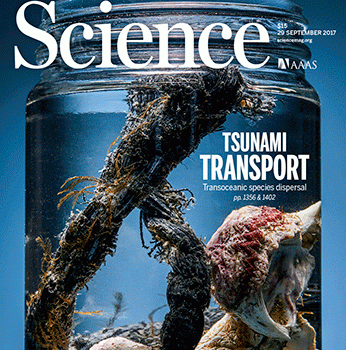Thesis Abstract:
Red abalone (Haliotis rufescens) gut microfloral compositions and growth were investigated and compared under a feeding experiment from May to October in 2016 at Moss Landing Marine Laboratories. The treatments were starvation and fresh macroalgal diets (Macrocystis pyrifera, Palmaria mollis, and Ulva lectuca). Abalone shell length (SL in cm) and wet in-shell mass (g) were measured for growth comparisons across treatments. In addition, gut samples at buccal cavity, intestine, and stomach as well as seawater and macroalgal diet tissue samples were also collected monthly for 16S rRNA Illumina MiSeq sequencing. Red abalone SL did not have a significant change over the entire feeding experiment, but their wet in-shell mass increased significantly as the red macroalgae fed animals were heavier than the other 2 diet treatments since September 2016 (one-way ANOVA test, F(2,12)=6.4, p=0.013). Furthermore, the metabarcoding assay has detected 17981 unique operational taxonomic units (OTUs) from all samples. Gut microflorall composition was significantly different across treatments at class (PERMANOVA test, F(3,211)=8.55, p=0.001) and genus (PERMANOVA test, F(3,211)=8.44, p=0.001) levels at a rarefaction depth of 13065 OTUs per sample. Gut microfloral composition was also significantly different at the 3 gut regions at class (PERMANOVA test, F(2,212)=79.76, p=0.001) and genus (PERMANOVA test, F(2,212)=60.27, p=0.001) levels. Proteobacteria, Bacteroidetes, Fusobacteria, and Cyanobacteria were dominant taxa in most of the samples. Moreover, SIMPER dissimilarity percentage analysis showed the gut microfloral composition between P. mollis-fed and M. pyrifera-fed, P. mollis-fed and Ulva. spp.-fed, and M. pyrifera-fed and U. spp.-fed abalones were respectively 39.76%, 40.15%, and 42.15% at phylum level. Microfloral composition between the stomach and intestine samples was more similar (36.53%) than between mouth and stomach samples (50.15%) and between mouth and intestine samples (48.68%) at phylum level. To date, this is the first study comparing gut microfloral compositions in red abalone under various macroalgal diets using Illumina sequencing technique. The gut microfloral metabarcoding results could be compared to that of other abalone species or other invertebrates. This work will enhance our understanding of the gut microfloral composition in red abalone which is essential for abalone farmers to support the production of quality juveniles for aquaculture and restoration purposes.
